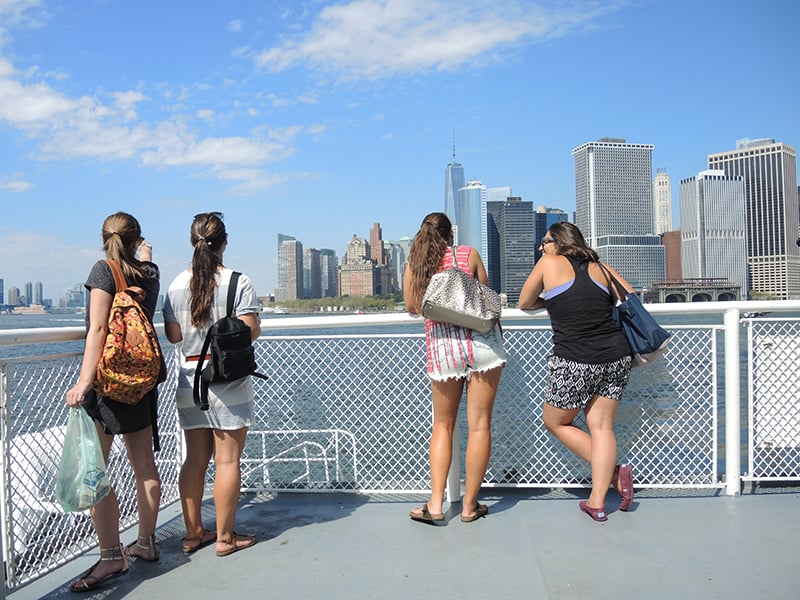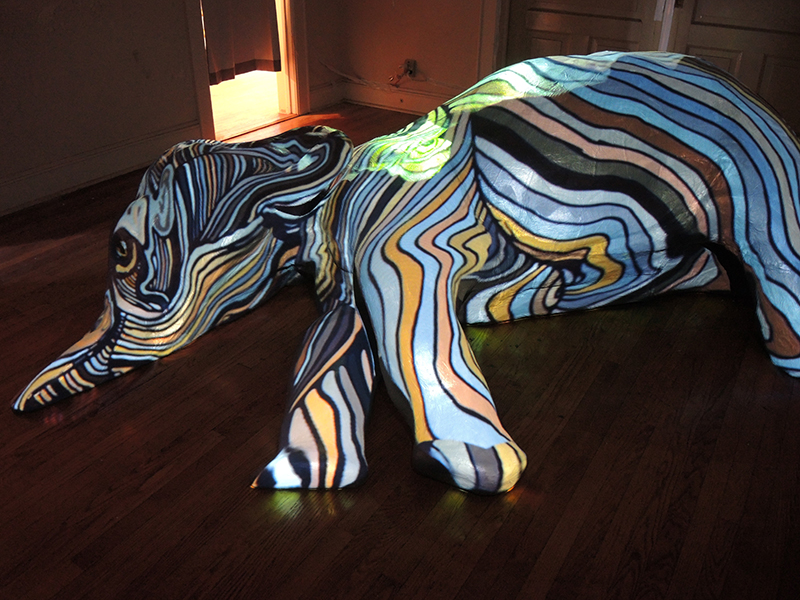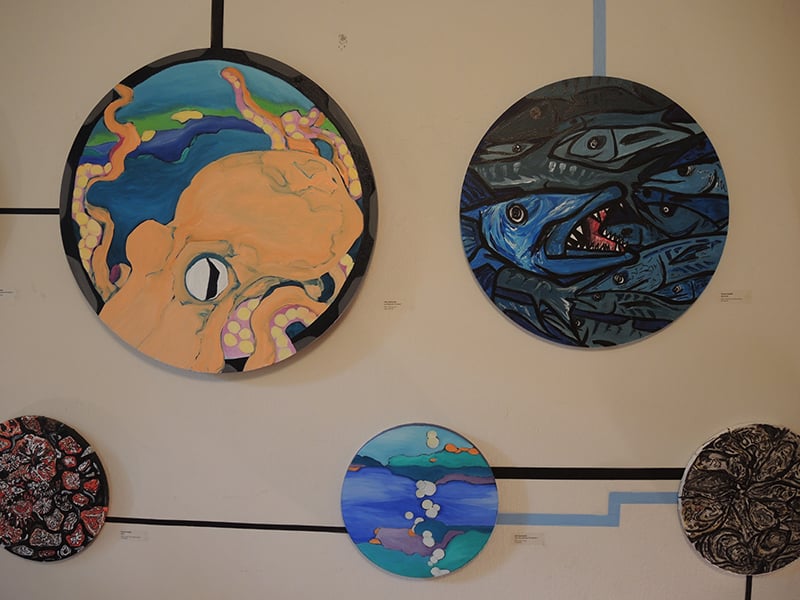Art Fairs
Summer Lingers at the Governors Island Art Fair
A free art fair run by artists, for artists.
A free art fair run by artists, for artists.
Sarah Cascone

Summer may be unofficially over, but New York’s island oasis, Governors Island, isn’t done for the season. The island kicked off the summer with a show called Figment (see “Artist-Designed Mini-Golf Draws Crowds to Governors Island“), and is wrapping things up with the Governors Island Art Fair (GIAF). Now in its seventh year, the fair is free and open to the public every weekend this month, from 11:00 a.m. to 6:00 p.m.
Unlike most art fairs, GIAF, is “run by artists, for artists,” according to its mission statement, offering participants the opportunity to represent themselves directly, sans gallery. First-time fairgoers might be surprised to find a venue where the artist herself is in the room with them. It’s a wonderful opportunity to engage personally with an artist, and the informal atmosphere and affordable prices offer the perfect opening for burgeoning collectors unsure of where to start in an intimidating market.
Each of the 100 participating artists is given a full room in one of the crumbling military barracks on Colonel’s Row “in which to wreak havoc as they see fit.” “We believe artists know what is best for their own work,” says the nonprofit organization behind the event, 4heads, in the festival press release. “Governors Island gives participating artists the space to create these special environments.” The unconventional setting is a huge part of the fair’s appeal. Each house is three stories tall, with narrow staircases with low ceilings, heavily chipping paint (often incorporated into the artists’ display), and increasingly dated kitchen appliances (the Coast Guard last was stationed there, but that was back in 1996).

On the ferry between Manhattan and Governors Island. Photo: Sarah Cascone.
While some artists are content to use the walls simply to hang their work, many of the most compelling pieces transform their environment, whether by painting every surface, turning off the lights, and blacking out the windows to create a dimly lit installation, or by seamlessly incorporating the existing fixtures into their work. A multi-colored screen-printed forest sprouts out of the walls in Ashley Rodriquez Reed’s Re-composing, while Chaney Lane Trotter transports the real forest—birch trees, moss, mulch, and all—inside the fair for her Second Before the Storm, hanging hundreds of sparkling needles from the ceiling to simulate rain about to hit the ground.
Andrea Sundt’s Water Compulsion II, a cloth-like cascade of digitally printed paper, seems to take on a life of its own, spilling out of a closet and climbing up the stairwell to the second floor, while No Said the Fruit Bowl, by Becky Brown, sees every surface in the kitchen painted in cream or white while the sink, cabinets, and fridge explode with an overflow of non-compliant appliances, tools, and computer technology that has taken on a life of their own.

Harsha Biswajit, The Animal is Absent.
Photo: Sarah Cascone.
artnet News delighted in Jackie Mock’s antique shop/mini-museum, which enshrines mundane objects, transforming everything from pens to pigeon feathers into treasured artifacts by displaying them in old-timey frames and curio cabinets. Our favorites included a carefully framed paint chip (“a piece of this wall, Colonel’s Row, Governor’s Island, a piece of this very wall you are looking at”); a crumbled Styrofoam chunk from Natural Bridge, Virginia’s, Foamhenge; and a tiny chest in which each little compartment housed folk remedies for the hiccups, such as a bottle of matches (“light a match, drop in the water, inhale”), a glass container of marshmallows (“chew a marshmallow”), and a VHS of Beach Blood (“scare yourself”).
Other highlights included Harsha Biswajit’s video sculpture The Animal is Absent, which uses projection mapping technology to give life to a resin elephant sculpture, and Jakob Theileis, whose geometric paintings and drawings become all the more impressive when you realize they were created by drawing robots. Sui Park’s Thought Bubbles gives organic, architectural shape to the immaterial using zip-ties, and Elizabeth Tomasetti’s playful Mirror of Truth offers a moment of introspection, followed by a cheeky handwritten fortune: “Make biscuits. Tomorrow,” or “Stop running for the train. Another one will come.”
Baltzer Glass’s steampunk-inspired assemblage of copper piping, brass instruments, wire mesh, and translucent colored plastic tubes, titled Coherence, serves as a giant, fanciful gerbil home, while next door Jillian Clark employed a chalk snapline, a common construction tool, to create an ethereal pattern of horizontal blue lines on the room’s walls, the excess dust settling on the floor in a striking gradient.

Gowanus Swim Society, porthole paintings by John Azelvandre and Kristen Haskel.
Photo: Sarah Cascone.
Also of note were Will Kurtz’s compelling newspaper sculptures, a carefully collaged man and his dog crafted from pages of the New York Times layered upon a wood and wire armature, and a fanciful yet cohesive mini-show from the Brooklyn-based collective the Gowanus Swim Society, imagining a submarine journey through the shallow Superfund site. Laurent Fort’s optically challenging light art played with reflection and shadow, while Sabrina Barrios paired a painterly wall drawing with a Tron-like futuristic black-light work in her two-part piece, How to Build a Pyramid.
With eight buildings filled wall-to-wall with paintings, photography, sculpture, installation, video, and sound art, you could easily spend a late summer’s afternoon here, if not a whole day, especially if you take the time to talk to the artists, most of whom are more than happy to tell you about your work. It’s all just a quick ferry ride from Brooklyn or Manhattan, and a welcome, art-filled escape from this still-sweltering city.